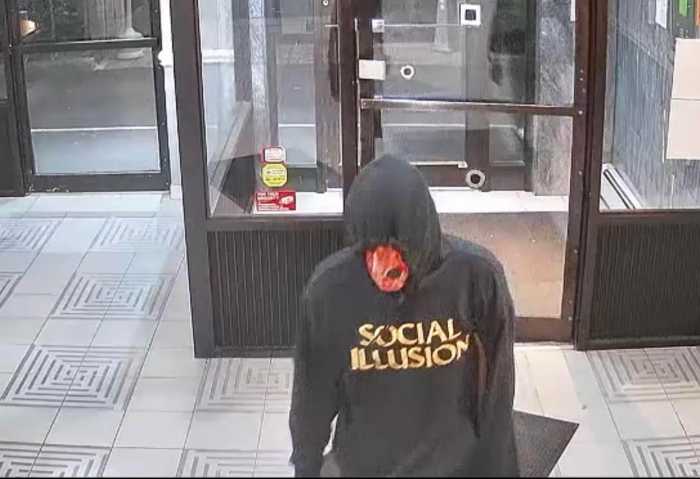BY ALINE REYNOLDS | A proposal to create a new charter middle school on Governors Island hit its first road block last week when Community Board 1’s Youth and Education Committee refused to support it.
The committee’s decision, however, was largely born of frustration related to the overcrowding crisis in Downtown public schools and had little to do with the specific proposal itself, according to committee members.
Great Oaks Charter School, a middle and high school in Newark, N.J., plans to open a new 450-student school accommodating grades 6-12 on Governors Island in Fall 2013. The program boasts small class sizes and two hours of daily tutoring for its students, according to Benjamin Carson, one of the founders of the Newark branch who presented the proposal to the committee at its Feb. 14 meeting in hopes that the board would endorse the plans in the form of a letter to the city Department of Education. The Great Oaks tutors, Carson said, would be recent college graduates who would be sponsored by one-year fellowships offered by Great Oaks, a program modeled after MATCH Charter School in Boston.
As with all other charter schools, students would be selected by lottery, meaning that everyone would have an equal chance of acceptance, according to Carson.
“We’re really describing ourselves as a school that’s targeting Lower Manhattan,” said Carson. “Our goal is to create a really warm, safe school culture, where kids feel the adults around them know them and are very interested in their success.”
“By giving students a really rigorous high school experience,” Carson added, “we can put them on better footing to succeed in college.”
Carson and his team will be submitting its charter application later this month for a review by the State Board of Regents this summer.
Carson emphasized that competing with non-charter Downtown public schools for city-owned space, which is a major concern of C.B. 1, is not part of his team’s agenda.
“I want to underscore that we’re not at all interested in pursuing public space – we want to be part of the solution to school overcrowding,” said Carson.
If the Governors Island site doesn’t pan out, the school would seek out private space Downtown, Carson said. A spokesperson for the Trust for Governors Island wouldn’t comment on Carson’s proposal, since the Trust hasn’t yet released a Request for Proposals for the leasing of its buildings.
Despite Carson’s pledge, committee members left the meeting feeling anxious that the charter could end up taking precious space away from public schools – particularly since Innovate Manhattan Charter School initially committed to private space and then subsequently moved into the Tweed Courthouse for its incubation this year, according to C.B. 1.
“If they brought a copy of a private lease to the next meeting, then it would be a different conversation,” said P.S. 234 parent Tricia Joyce.
The citywide nonprofit organization Class Size Matters has filed a lawsuit charging the city with fostering a “separate and unequal” education system by allowing charters located in public school buildings access to approximately $100 million in space and services free of charge.
“I wasn’t opposed to charters initially, but I’ve seen the way they’ve been implemented in New York City, and they’ve been a disaster,” said Class Size Matters Executive Director Leonie Haimson, pointing to Ross Global Academy, which initially incubated at Tweed and was closed last spring due to poor performance. “They use all sorts of ways to discourage or push out kids when they’re not making [high] grades.”
Carson’s presentation reignited this larger debate of whether Lower Manhattan parents espouse charter schools in general. Committee member Jeff Mihok, for one, is unilaterally against charters, contending that the schools’ control by organizations, even if they’re nonprofits, is an abdication of government responsibility, and that the schools are unduly influenced by private consulting firms in the background.
“I’m sure the guy is well-intentioned and believes in what he’s doing,” said Mihok of Carson’s presentation. “What I’m opposed to is private money being mixed into public schooling. We shouldn’t be mixing corporate money into schools.”
C.B. 1 Public Member Tina Schiller, another P.S. 234 parent, argued that charters don’t undergo the same level of scrutiny that non-charter city public schools do. “It’s a silent revolution to privatize education without any discourse about the direction this will take us,” said Schiller. “These schools have the ‘Cathie Black’ business model method of education reform all over them.”
North Battery Park City resident Kate Hayes, a future member of Great Oaks’ board of trustees, said she would champion another school option in School District Two and hopes to be able to send her five-year-old son to the charter, particularly in light of the growing waitlists at the local non-charters.
“My perspective is, having more school choice is a good thing – with anything, private or public money, right now,” said Hayes. “My thought is that if there’s overcrowding currently in elementary schools in my neighborhood, at some point it’s going to boil over, and the same problem is likely to exist in the middle schools.”
Countering Haimson’s broader criticism of charters, Hayes said Great Oaks’ tutoring program will allow teachers to hone in on the students’ weaknesses. “When kids are struggling, there will be resources available,” she said.
Joyce’s opinion differed from both schools of thought: the Downtown community, she said, isn’t ready to have a debate about charters. “Until they take care of this elephant in the room which is the massive overcrowding of our public schools, then we can’t even have a discussion of charter schools,” she said. “Then, if we have the luxury of thinking about choices, we’ll look at that.”



































